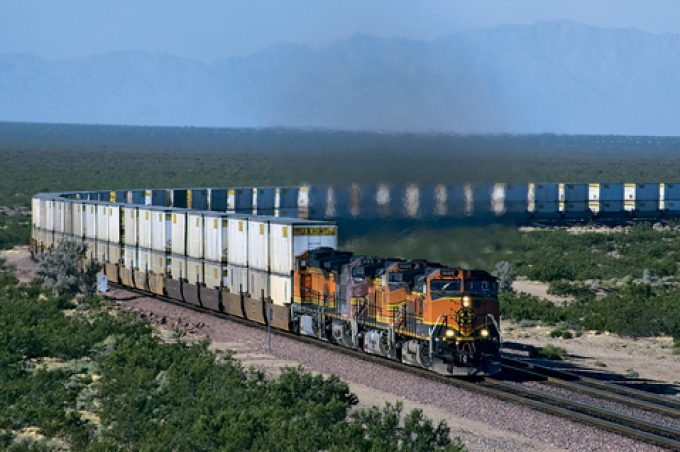DSV US expansion continues with major investment in California hub
DSV is betting on the US: it has confirmed it is spending some $107m to ...

After a long trough of sluggish performance, US intermodal traffic is growing, and the market points to larger gains ahead.
This month Union Pacific (UP) opened a new route between Chicago and southern California, featuring transits of 4-6 days between its Inland Empire terminal in Fontana and Northlake, targeting intermodal traffic that would otherwise move by truck.
In its announcement, the railway stressed the benefit of lower drayage costs for shippers at both ends of the route.
In a separate move, UP is adding on-dock rail service at the port of Houston, which has seen double-digit gains in box traffic in recent years.
According to numbers from the Association of American Railroads, intermodal traffic is up in the US, with volumes this year, to 6 April, up 9% over the first 14 weeks of 2023.
In Mexico, intermodal traffic rose 9% last year and is on course for similar expansion in 2024. Diego Anchustegui, president of the Mexican Association of Intermodal Transport, said he expected double-digit growth on many routes, pointing to the impacts from nearshoring and disruptions in cross-border trucking.
Recent years have witnessed a proliferation of new domestic intermodal services, such as those connecting the capital to Monterrey and Guadalajara.
Domestic intermodal traffic surged 36% last year, but the nearshoring trend is expected to fuel more cross-border volumes too. Mr Anchustegui sees capacity increases by CPKC serving Lazaro Cardenas and Ferromex at Manzanillo.
And US rail carriers see an opportunity to snatch traffic from trucking. UP president Beth Whited has marked the improvement of network efficiency to attract shippers using trucking as a priority.
In its latest outlook on the US rail industry, S&P Global outlined promising potential. It expects operating results to strengthen this year from improved service and abating inventory de-stocking. Its analysts see rail carriers poised to make significant inroads into business currently moved by truck.
“In our view, improved reliability should temper the competitive pressures that have heightened on certain routes (notably short hauls) from trucks over the past couple of years. Railroads will need to continue to perform to convince shippers of reliability before truck conversions begin en mass,” they wrote, adding that trucking rates are bound to rise.
“Although trucking spot rates continue to hover at trough levels, since early 2023, we believe the current rates to be unsustainable, forcing capacity to exit the market. With stable service and more economical costs, railroads are poised to win back share from trucks,” they commented.
This tallies with predictions by other observers and industry executives that the trucking market (notably the truckload sector) is still showing considerable overcapacity and will see many players exit.
Trucking behemoth Knight-Swift Transportation wrote in a securities filing last week that it turned away some contractual business as shippers were attempting to push rates down further yet.
“We were not willing to commit to further concessions on what we view as unsustainable contractual rates,” it said.
As a result, the carrier has shifted more capacity to the spot market, which created further pressure on revenue per mile and utilisation, according to the filing. Knight-Swift has cut its earnings guidance for the second half of this year by 56%.
Last week, JB Hunt reported a 26% drop in revenue, to $285m, for its brokerage unit, Integrated Capacity Solutions, in the first quarter. Loads fell 22% and revenue per load shrank 5%.
The presentation of the company’s results triggered a drop in share prices of trucking companies, including Saia, Old Dominion, ArcBest and TFI International.
The rise in diesel prices is going to make the going tougher yet for truckers, especially the smaller operators.
Comment on this article